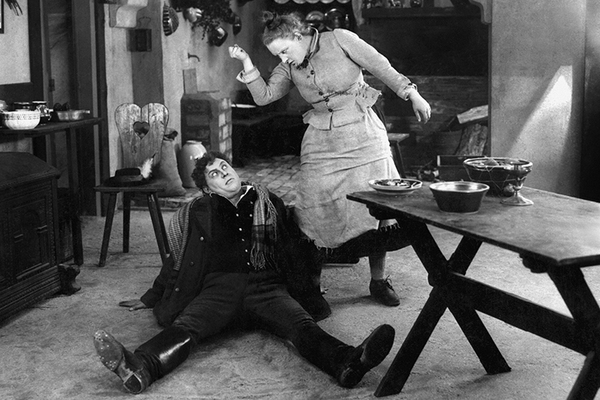Kohlhiesel’s Daughters
Kohlhiesels Töchter
de Ernst Lubitsch , Allemagne , 1920
Mathias Kohlhiesel (Jacob Tiedtke) has two daughters (Henny Porten) to marry off: Liesel, the eldest, who is ungainly and surly, and Gretel, the youngest, who is pretty and docile. Xaver (Emil Jannings) wants to marry Gretel, but Kohlhiesel refuses: he will only give Gretel's hand once Liesel herself is married. Seppl (Gustav von Wangenheim), who is also in love with Gretel, suggests that his friend Xaver marry Liesel first and wait for the union to quickly end...
Information on film rights and desired prospects:
Film representative: Luciano Palumbo (Head of Film Restoration and Digitization, Friedrich-Wilhelm-Murnau-Stiftung)
Rights holders: Friedrich-Wilhelm-Murnau-Stiftung
Available rights: Worldwide rights for theatrical release, home video, and VOD
Exception: home video rights in Germany, Austria, and Switzerland
Priority needs for the film: International sales, theatrical distribution, video publishing

Before making a name for himself in Hollywood and leaving his mark on cinema history with his “Lubitsch Touch” in unforgettable films such as The Great Divorce (1933), Ninotchka (1939) and To Be or Not to Be (1942), Ernst Lubitsch enjoyed a successful start to his career in Germany in the 1910s and 1920s.
During the winter of 1919-1920, he twice transposed William Shakespeare's characters to the Bavarian mountains: the lovers of Verona in Romeo and Juliet in the Snow and those of The Taming of the Shrew in The Kohlhiesel Girls. The latter is Lubitsch's most popular work shot in Germany, regularly screened in theaters until the end of the 1920s.
In this peasant farce, actress Henny Porten plays the roles of sisters Liesel and Gretel, the harpy opposite the desired one. The allegorical double portrait turns out to be a furious battle of the sexes. This film about deceptive appearances and the beauty of the soul is a gem of buffoonery: everything is exaggerated—the actors giving it their all—to emphasize the grotesque nature of the story and the characters. Playing on the comedy of the situation, Ernst Lubitsch delivers an energetic, particularly fast-paced film, tinged with a certain sense of burlesque that marked the first part of his work.
"By turning to ‘modest’ genres such as peasant comedy and melodrama, [Lubitsch] displays less cunning than mistrust of the intellectualism, dubious since it was transplanted wholesale from a pre-war culture (pictorial or literary expressionism, vaguely nationalistic spectacle, old legends), which was then invading German cinema. (Bernard Eisenschitz, Cahiers du cinéma no. 198, February 1968)
After a first trip at the end of 1921, Ernst Lubitsch left Germany for Hollywood in 1922, invited by Mary Pickford. No one suspected at the time that this departure would be permanent.
Kohlhiesel's Daughters (Kohlhiesels Töchter)
Germany, 1920, 1h05, black and white, format 1.33
Directed by Ernst Lubitsch
Screenplay by Ernst Lubitsch, Hanns Kräly
Cinematography by Theodor Sparkuhl
Set design by Jack Winter
Costumes by Jan Baluschek
Production: Messters Projektion
Cast: Henny Porten (Liesel/Gretel), Jacob Tiedtke (Mathias Kohlhiesel, father of Liesel and Gretel), Emil Jannings (Peter Xaver), Gustav von Wangenheim (Paul Seppl), Willy Prager (the merchant)
Released in Germany on March 9, 1920
4K restoration in 2024 by the Friedrich-Wilhelm-Murnau-Stiftung
Laboratories: Haghefilm, L’Immagine Ritrovata
The film has been awarded the Lumière Classics label, which recognizes the most beautiful restorations of the year.
Thanks to Friedrich-Wilhelm-Murnau-Stiftung
Film awarded the label




